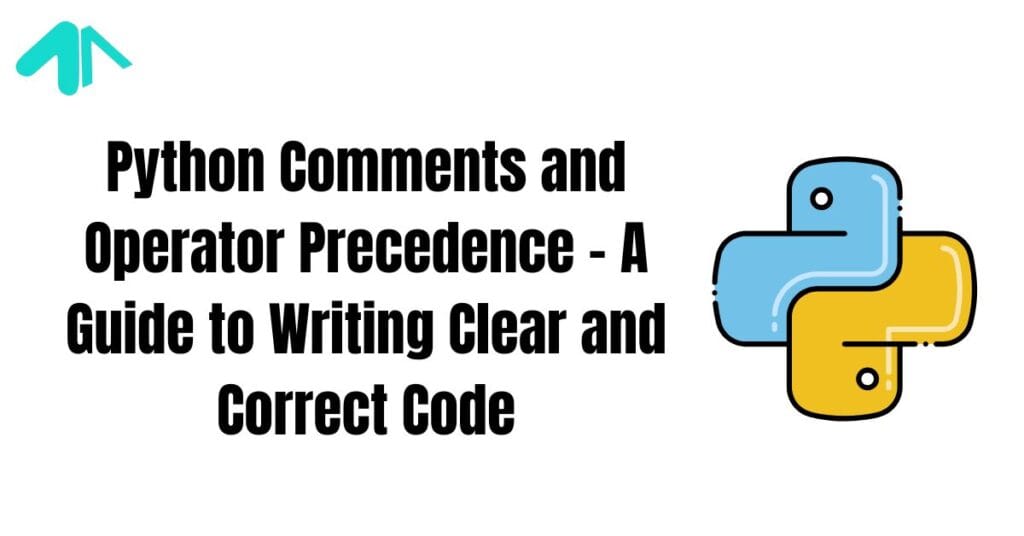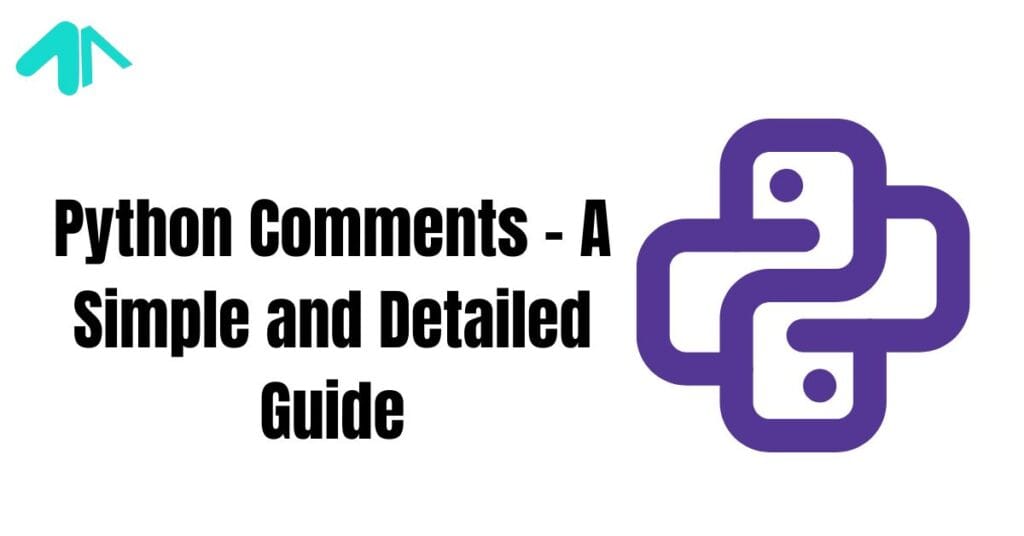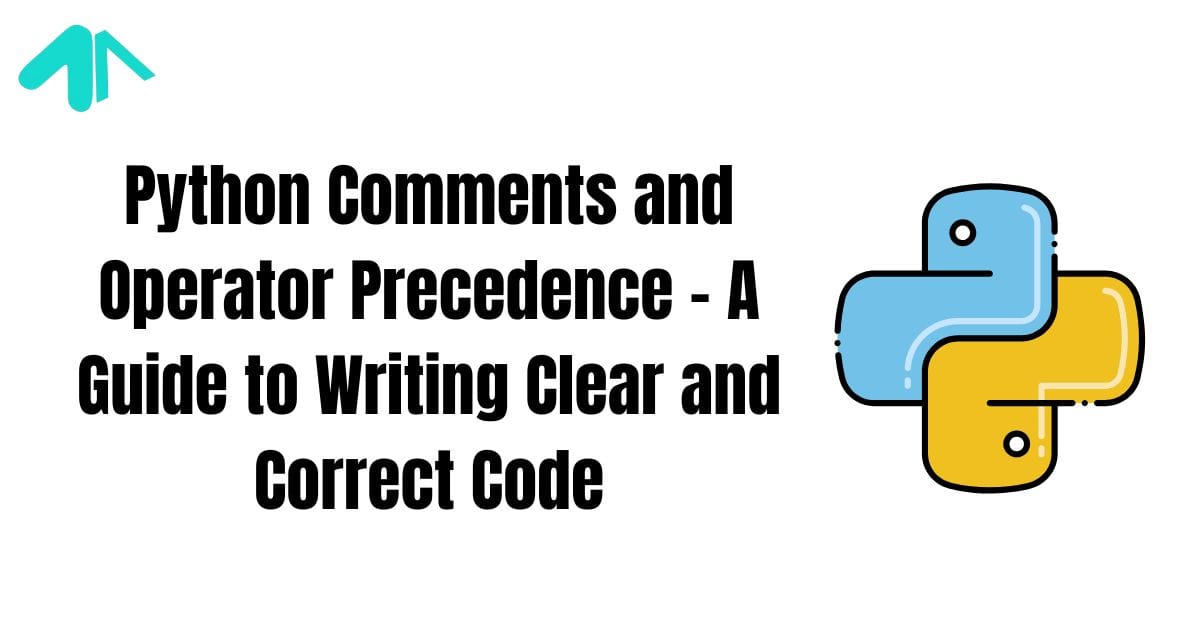2025 Python Comments and Operator Precedence
Comments in Python are used to explain code but are ignored by the interpreter. They make programs easier to understand and debug.
Python supports single-line comments (#), multi-line comments, and docstrings (""" """) to document functions and classes. Writing clear comments helps in maintaining and sharing code.

Operator precedence decides the order in which operations are performed in an expression. Just like in math, some operators (like * and /) are evaluated before others (like + and -).
Using parentheses can change the order of execution. Understanding operator precedence helps avoid errors and ensures correct results in calculations.
Python Comments – A Simple and Detailed Guide
When you write a Python program, sometimes you need to add extra notes to explain what your code does. These notes are called comments. Python comments help humans understand the code but are completely ignored by the computer.

What Are Comments in Python?
A comment is a line in your code that Python does not execute. It is written only to help programmers understand the code better.
Example of a Comment in Python:
# This is a comment
print("Hello, World!") # This is also a comment
In the above code:
- The first line is a comment (
# This is a comment). - The second line prints “Hello, World!” on the screen.
- The part after
#in the second line is also a comment.
Python ignores comments when running the code.
Why Are Comments Important?
- Make Code Easier to Read – Comments help programmers understand the code quickly.
- Help in Debugging – Comments can help you find and fix errors in your code.
- Useful for Teamwork – If many people are working on the same project, comments make it easier to understand each other’s code.
- Helpful for Future Reference – When you look at your code after months, comments remind you how it works.
Types of Comments in Python
Python has three types of comments:
- Single-Line Comments
- Multi-Line Comments
- Docstring (Documentation String) Comments
Let’s understand each type with examples.
1. Single-Line Comments
A single-line comment starts with a # symbol. Everything after # is ignored by Python.
Example:
# This is a single-line comment
print("Python is fun!") # This is also a comment
In this example:
- The first line is a comment.
- The second line prints a message. The part after
#is ignored by Python.
When to Use Single-Line Comments?
- To explain a single line of code.
- To temporarily disable a line of code without deleting it.
Example: Disabling a Line of Code
# print("This line will not run")
print("Only this line will run")
Here, the first print statement is commented out, so Python ignores it.
2. Multi-Line Comments
Python does not have a special way to write multi-line comments. But you can write multiple # lines or use triple quotes (""" """ or ''' ''').
Example 1: Using Multiple # Symbols
# This is a multi-line comment
# It spans across multiple lines
# Python ignores all these lines
print("Multi-line comments in Python")
Example 2: Using Triple Quotes (""" """)
"""
This is another way to write
multi-line comments using triple quotes.
Python will ignore this text.
"""
print("Triple quotes for comments!")
Though triple quotes work as comments, they are actually docstrings (explained in the next section).
When to Use Multi-Line Comments?
- When you need to explain a large section of code.
- When you need to describe the logic of a program.
3. Docstring (Documentation String) Comments
A docstring is a special type of comment used to document functions, classes, and modules. It is written inside triple quotes (""" """ or ''' ''').
Example: Function with Docstring
def greet():
"""This function prints a greeting message."""
print("Hello, welcome to Python!")
greet()
In this example:
- The
"""This function prints a greeting message."""is a docstring. - It explains what the function
greet()does. - The docstring can be accessed using the
__doc__attribute.
Example: Accessing a Docstring
print(greet.__doc__) # Output: This function prints a greeting message.
When to Use Docstrings?
- To document functions, classes, and modules.
- To provide instructions for using the function or class.
Best Practices for Writing Comments
- Write Clear and Short Comments
- Avoid writing long comments. Keep them simple.
- Bad Example:
# This function takes a number and returns the square of that number by multiplying the number with itself def square(n): return n * n - Good Example:
# Returns the square of a number def square(n): return n * n
- Use Comments Only When Necessary
- Too many comments can clutter the code.
- Only write comments where they add value.
- Use Docstrings for Functions and Classes
- Instead of writing multiple comments, use a docstring to describe a function.
- Update Comments When Code Changes
- If you modify your code, update the comments too.
- Old comments can confuse other programmers.
- Do Not Write Useless Comments
- Bad Example:
x = 10 # Assigning 10 to x - Good Example:
# Number of items in stock x = 10
- Bad Example:
Frequently Asked Questions (FAQs)
1. Are comments necessary in Python?
Yes, comments help make your code more understandable, especially in large projects.
2. Do comments affect the execution of the code?
No, Python ignores comments. They do not affect how the code runs.
3. Can I write comments in different languages?
Yes, you can write comments in any language. Python will ignore them.
4. What is the difference between a comment and a docstring?
A comment (#) is ignored by Python, while a docstring (""" """) is used to document functions and can be accessed using __doc__.
Use:
- Single-line comments (
#) for short explanations. - Multi-line comments (
#multiple times or triple quotes) for longer descriptions. - Docstrings (
""" """) for documenting functions and classes.
By following best practices, you will write better and more readable Python code.
Understanding the Precedence of Operators in Programming
When writing code, you often use different operators (like +, -, *, /, etc.) to perform calculations and operations. But did you know that these operators follow a set of rules that determine which one is executed first? This is known as operator precedence.

What is Operator Precedence?
Operator precedence defines the order in which operators are executed in an expression. Some operators are executed before others, just like in mathematics.
For example:
result = 2 + 3 * 4 # What will be the output?
print(result) # Output: 14
Here, multiplication (*) has a higher precedence than addition (+), so 3 * 4 is calculated first, and then 2 is added.
To change the order, you can use parentheses (()):
result = (2 + 3) * 4 # Now addition happens first
print(result) # Output: 20
So, operator precedence matters a lot!
Operator Precedence Table
Let’s look at a table showing common operators from highest to lowest precedence:
| Precedence (High to Low) | Operators | Description |
|---|---|---|
| 1 (Highest) | () | Parentheses (used to change precedence) |
| 2 | ** | Exponentiation (Power) |
| 3 | *, /, //, % | Multiplication, Division, Floor Division, Modulus |
| 4 | +, - | Addition, Subtraction |
| 5 | <<, >> | Bitwise Shift Left and Right |
| 6 | & | Bitwise AND |
| 7 | ^ | Bitwise XOR |
| 8 | ` | ` |
| 9 | ==, !=, >, <, >=, <= | Comparison Operators |
| 10 | not | Logical NOT |
| 11 | and | Logical AND |
| 12 (Lowest) | or | Logical OR |
Let’s go over some of these operators and their precedence in more detail.
Understanding Operator Precedence with Examples
1. Parentheses () – The Highest Precedence
Parentheses have the highest precedence and force an operation to be executed first.
Example:
result = (5 + 2) * 3 # Addition happens first because of ()
print(result) # Output: 21
Without parentheses:
result = 5 + 2 * 3 # Multiplication happens first
print(result) # Output: 112. Exponentiation ** – Higher than Multiplication
Exponentiation (**) is evaluated before multiplication and division.
Example:
result = 2 ** 3 * 4 # 2**3 = 8, then 8*4 = 32
print(result) # Output: 32
To change the order:
result = 2 ** (3 * 4) # 3*4 = 12, then 2**12
print(result) # Output: 40963. Multiplication, Division, Floor Division, Modulus – Equal Precedence
The operators *, /, //, and % all have equal precedence and are evaluated from left to right.
Example:
result = 10 / 2 * 5 # Left to right: 10/2 = 5, then 5*5 = 25
print(result) # Output: 25.0
Floor division // and modulus % also follow the same rule:
result = 10 // 3 % 2 # Left to right: 10//3 = 3, then 3%2 = 1
print(result) # Output: 14. Addition and Subtraction – Lower than Multiplication
Addition (+) and subtraction (-) have lower precedence than multiplication and division.
Example:
result = 10 - 2 + 5 * 2 # Multiplication first: 5*2 = 10, then 10-2+10
print(result) # Output: 18
To change the order:
result = (10 - 2 + 5) * 2 # (10-2+5) = 13, then 13*2
print(result) # Output: 265. Comparison Operators – Lower than Arithmetic Operators
Comparison operators (>, <, ==, !=, etc.) are evaluated after arithmetic operations.
Example:
result = 5 + 3 > 6 # 5+3 = 8, then 8 > 6 (True)
print(result) # Output: True6. Logical Operators – not, and, or (Lowest Precedence)
Logical operators have the lowest precedence.
nothas higher precedence thanandandhas higher precedence thanor
Example:
result = True or False and False # AND first: False and False = False, then True or False
print(result) # Output: True
To force or first:
result = (True or False) and False # OR first: True or False = True, then True and False
print(result) # Output: FalseHow to Control Operator Precedence?
To control operator precedence, use parentheses (). Always group expressions clearly to avoid confusion.
For example, instead of:
result = 10 + 5 * 2 - 3 / 3
Write:
result = (10 + 5) * (2 - 3 / 3)
This makes the code easier to read and avoids mistakes.
FAQs on Operator Precedence
1. What happens if two operators have the same precedence?
They are evaluated from left to right (except **, which is evaluated right to left).
2. Why does 2 + 3 * 4 give 14 and not 20?
Because multiplication (*) has higher precedence than addition (+), so 3 * 4 happens first.
3. How can I ensure a specific order of operations?
Use parentheses () to group expressions.
4. Does operator precedence change in different programming languages?
Most languages follow similar rules, but always check the official documentation.
Summary
Both comments and operator precedence play an important role in writing clear and error-free code. Comments help explain the logic of a program, making it easier to read, debug, and maintain. Python provides single-line comments (#), multi-line comments, and docstrings (""" """) for documentation.
On the other hand, operator precedence determines the order in which different operations are performed. Just like in mathematics, some operators have higher priority than others, ensuring that expressions are evaluated correctly. Using parentheses can help control execution order and prevent errors. Understanding both concepts improves coding efficiency and reduces mistakes.

